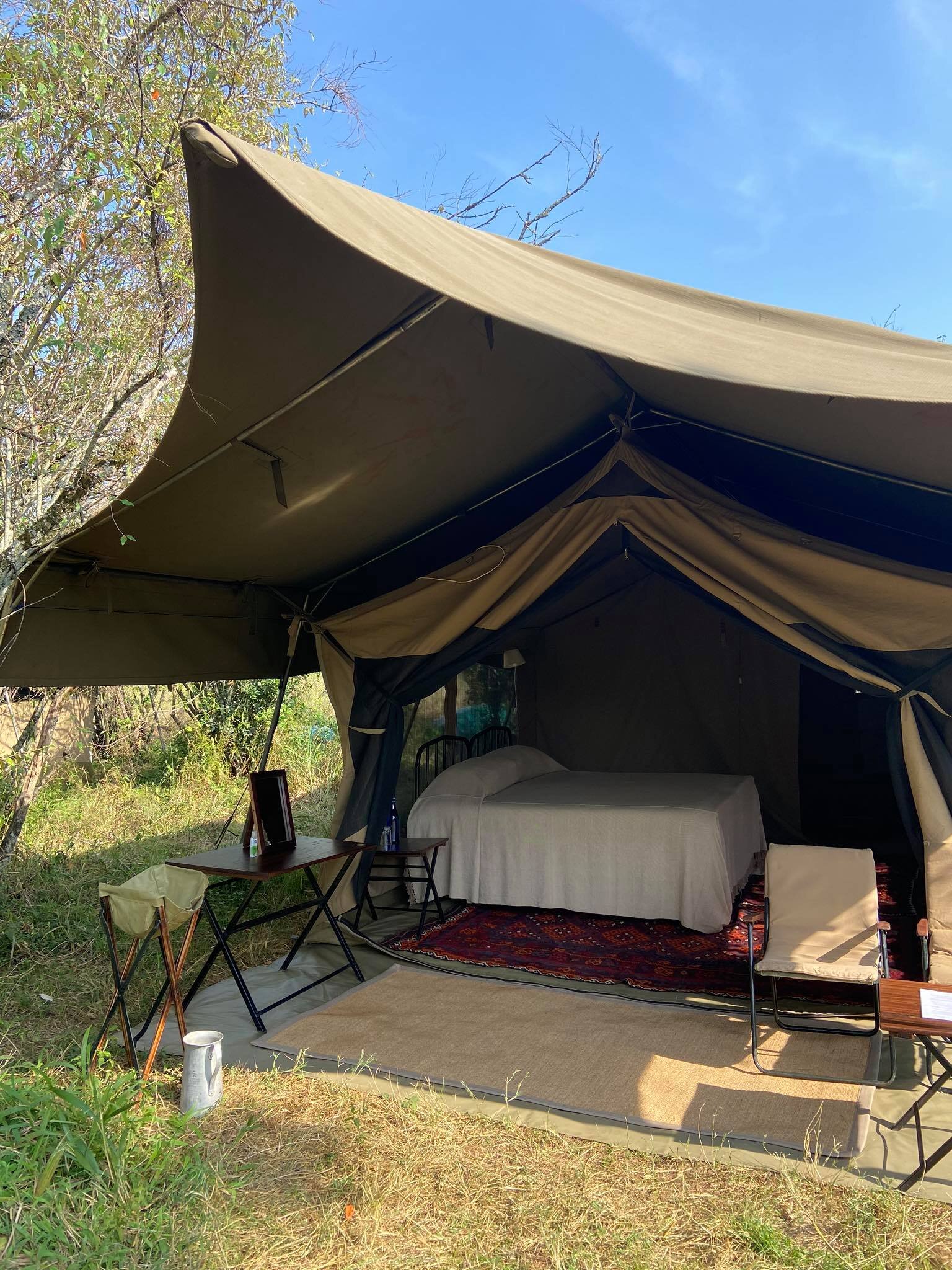Life and death on the Mara River
Like a trail of ants the wildebeest trot single file along the top of a ridge by the Mara River. Their shiny coats and the dust cloud rising from the valley below are clues that we may have found what we are searching for. We trace the line to its source at the riverbank, where the stragglers of this gigantic herd are still scrambling to get across the turbid water.
A large herd crossing the Mara River. Photo by Shaun Mousley
Driven by an insatiable appetite for greener pastures, hundreds of lanky, bearded herbivores hurl themselves off the steep bank opposite us into the river. On the other side they are swept into a frenzied mass and clamber up jagged rocks to join the rest of the herd. From a distance it’s a captivating spectacle. But through my binoculars the scene takes a very grim turn.
Some of those caught up in the melee sink beneath the surface of the water and don’t re-emerge. One is swiftly pulled under by a large crocodile. I realise that a cluster of rocks downstream is actually a heap of bloated bodies. Marabous and vultures peck at their rotting hides. On the muddy riverbank, brown bulges occasionally twitch and writhe. A few lucky enough to have survived the water were trampled on the way out. On the adjacent plain, distressed calves sprint along the edges of the herd calling out for their lost mothers.
On average, of the 1.5 million wildebeest that trek into the Mara from the Serengeti each year, 300,000 die. Most are killed at river crossings, which may seem like a huge waste. But wildebeest – both alive and dead – influence the landscape in ways that aren’t at first obvious. The carcasses that float down the river nourish an entire ecosystem – river fish, microorganisms, birds and even hippos. Their bones take years to break down beneath the water’s surface, functioning as a slow-release fertiliser for plants. And the bodies of those killed by lions and other predators provide nutrients for the land where they decompose.
Although ‘The Circle of Life’ is a difficult justification for the slaughter of wildebeest en mass, we are reassured by the explanation from our guides that it will benefit the ecosystem in the long-run.
There were fewer minivans in the Mara this season because of the coronavirus, but the wildebeest showed up in their hundreds of thousands. Photo by Shaun Mousley
As the light fades we leave the chaos behind and head south towards our camp on the bank of the Sand River. Thousands of wildebeest march in the same direction, lured by a heavy downpour on the plains of the Serengeti. I’m amazed at how quickly the herds respond to the shifting rainfall, and the fresh growth that it stimulates.
In camp we enjoy a sundowner on the river’s edge. The Sand River is a tributary of the Mara River, and winds along Kenya’s border with Tanzania. It’s seasonal so the water is only ankle-deep. Our mobile camp was set up along a shaded stretch of the riverbank by Ker and Downey Safaris – the longest-running safari outfitter in Africa.
With a view out towards the Serengeti, and only one other camp in this corner of the reserve, it’s a very private spot. Its six comfortable safari tents sit amongst croton thickets and face the river. Although it’s self-catered, there’s an expert chef on hand to prepare meals, which are served in a large ‘mess’ tent. Once the migration is over, the camp will be packed into a lorry and driven back to Nairobi, leaving little trace that it ever existed.
By the campfire we can hear the constant drone of the herds on the plains around us. The darkness adds another layer of risk for those still compelled to leap across the river. It seems senseless, but it will sustain the landscape long after the dust settles.
To book a trip with Ker and Downey Safaris, head to www.kerdowneysafaris.com.






